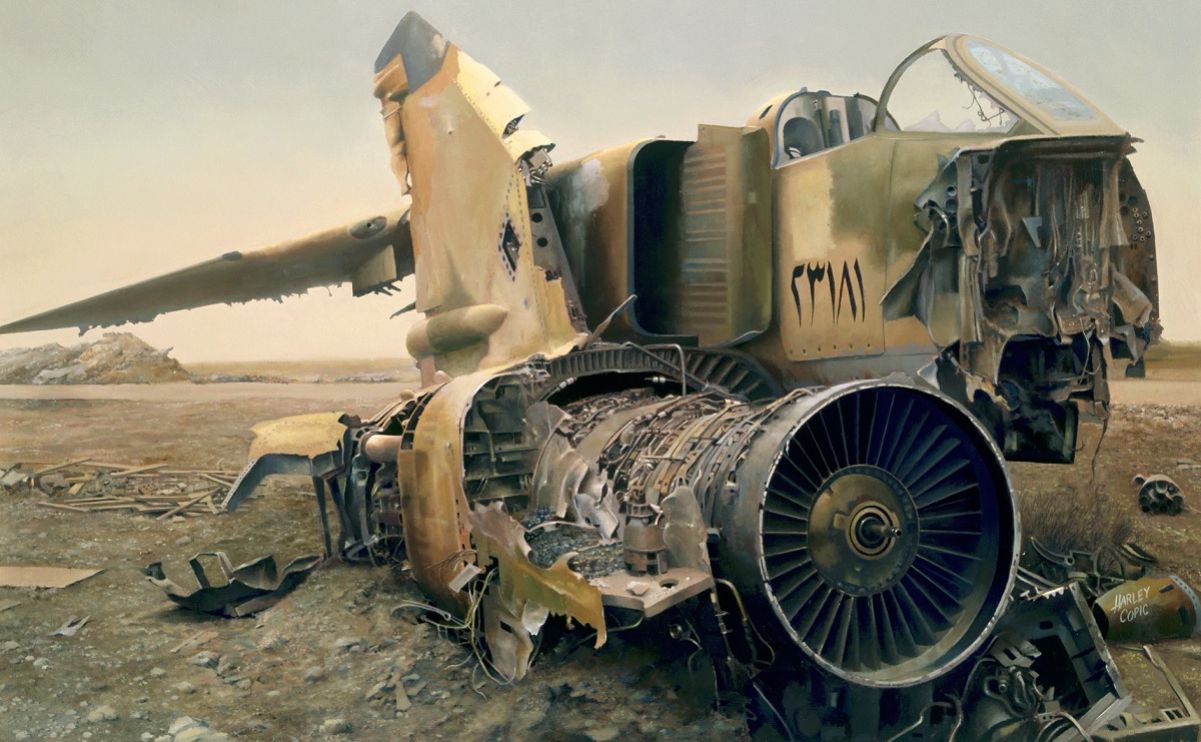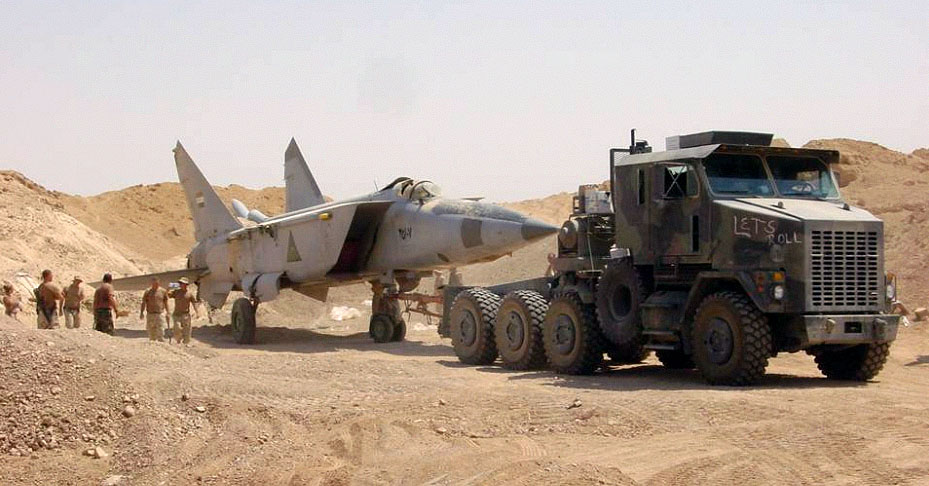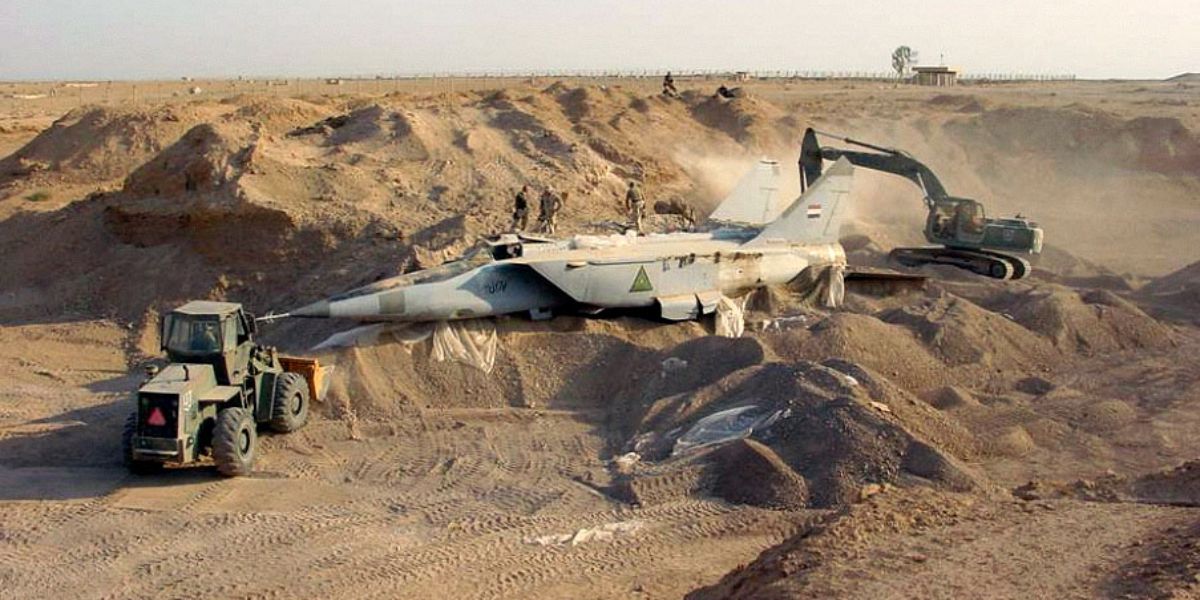No opposition from the Iraqi Air Force during Operation Iraqi Freedom
Preemptive attacks against the presidential palace of former Iraqi dictator Saddam Hussein and specific military targets marked the start of Operation Iraqi Freedom (OIF) on March 20, 2003. About 67,700 “boots on the ground” and 15,000 Navy personnel on ships in the region followed the initial attack. Iraq was judged to violate UN Security Council Resolution 1441, which “prohibits stockpiling and importing weapons of mass destruction (WMDs),” prompting the authorization of OIF.
Five weeks after the invasion started, Baghdad fell due to the swift defeat of Iraqi forces. There was no opposition from the Iraqi Air Force (IrAF) to the US and coalition forces during the invasion of Iraq.

Why?
When Iran and Iraq ended a brutal 8-year war in 1988, the IrAF had fought well.
As Daniel L. Haulman, PhD Air Force Historical Research Agency, explained in his document What Happened to the Iraqi Air Force? “By 1991, it was one of the largest air forces in southwestern Asia, with well over 700 fixed-wing combat aircraft. Iraq had purchased new and very capable fighter aircraft, including MiG-29s from the Soviet Union and Mirage F-1s from France. The country had also improved its air bases, increasing the size and number of their runways and taxiways and constructing hundreds of hardened aircraft shelters to protect aircraft on the ground. Yet twelve years later, when the United States and coalition forces invaded Iraq in 2003 [during Operation Iraqi Freedom], they faced no Iraqi Air Force opposition. Not one Iraqi warplane attacked the invaders as they proceeded toward Baghdad.”
37 Iraqi Air Force airplanes shot down during Operation Desert Storm

“During the Gulf War or Operation DESERT STORM, between January and March 1991, USAF pilots shot down 37 Iraqi airplanes, including 32 fixed-wing airplanes and 5 helicopters. The lost Iraqi airplanes included eight MiG-23s, six F-1s jets, five MiG-29s, four SU-22s, two SU-25s, two MiG-25s, two MiG-21s, one PC-9, one IL-76, one SU-7, and five helicopters, including two MI-8s, one MI-24, and two that were not identified. In December 1992 and January 1993, two USAF F-16 pilots each shot down two additional Iraqi aircraft, including a MiG-23 and a MiG-25.”
Haulman continues;
“When the United States invaded Iraq in 2003, the Iraqi Air Force did not show up. It did not generate a single sortie. Allied air and ground forces operated without any aerial opposition. The absence of Iraqi Air Force opposition allowed the United States Air Force to use aircraft more vulnerable than fighters and bombers, such as helicopters, transports, and drones, with less fear of having them shot down over enemy territory. Of course, the failure of Iraq to launch any aircraft to oppose the invasion was partly deliberate. The Iraqi leadership realized that challenging the United States and coalition air forces would be futile, in light of the 1991 campaign.”
Thus, as the photos in this post show, Saddam Hussein buried Iraq’s air force in the desert.

Iraqi Air Force Russian fighter jets buried in the Iraqi desert
Defense Secretary Donald Rumsfeld stated in a press briefing on August 5, 2003, that American forces had discovered IrAF Russian fighter jets buried in the Iraqi desert, as reported by Kathleen T. Rhem of the American Forces Press Service in the article “American forces unearth hidden aircraft in Iraq.”
“We’d heard a great many things had been buried, but we had not known where they were, and we’d been operating in that immediate vicinity for weeks and weeks and weeks… 12, 13 weeks, and didn’t know they were (there),” Rumsfeld said.
The secretary said he wasn’t sure how many such aircraft had been found, but noted, “It wasn’t one or two.”
“Something as big as an airplane that’s within… a stone’s throw of where you’re functioning, and you don’t know it’s there because you don’t run around digging into everything on a discovery process,” Rumsfeld explained. “So until you find somebody who tells you where to look, or until nature clears some sand away and exposes something over time, we’re simply not going to know.
“But, as we all know,” he added, “the absence of evidence is not evidence of absence.”

Photo by Master Sgt. T. Collins / U.S. Air Force

